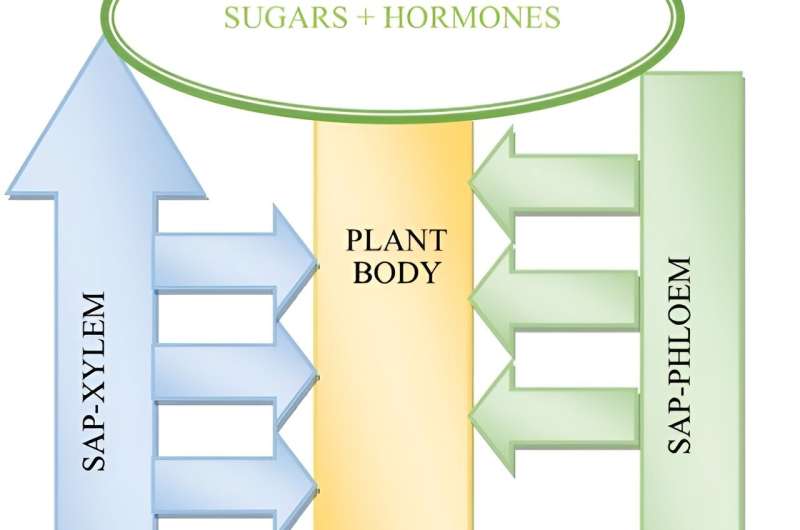This article has been reviewed according to Science X's editorial process and policies. Editors have highlighted the following attributes while ensuring the content's credibility:
fact-checked
trusted source
proofread
Unlocking the secrets of plant-electromagnetic field interactions: A comprehensive review

A research team has meticulously analyzed the biological impacts of ornamental plants' exposure to electromagnetic fields (EMFs), especially those at high frequencies. They proposed a comprehensive strategy to predict and mitigate these effects by considering various factors such as the source of exposure, material properties, and environmental conditions.
The team successfully forecasted thermal effects and outlined protective measures by leveraging governing equations related to electromagnetic and heat transfer phenomena. This exhaustive approach identifies vulnerable plant parts and suggests avenues for further investigation, including categorizing plants, establishing bio-thermal-EM parameters, and defining exposure thresholds.
The review article is published in the journal Ornamental Plant Research.
Human-plant interactions offer manifold benefits spanning economic, environmental, and health domains, fostering a growing recognition of plants as essential rather than mere luxuries. However, alongside these advantages, human activities generate pollutants that detrimentally affect plant life.
Ornamental plants, crucial for their decorative value, face heightened vulnerability due to their proximity to human habitats, which are increasingly saturated with EMFs emitted by various devices. EMF exposure from artificial sources or natural phenomena like lightning induces biological stress in plants, primarily manifesting as thermal effects.
Existing research on plant stress factors has explored histology and specific species' responses to stress, laying the groundwork for understanding plants' responses to EMF exposure.
The research proposes an approach to study the biological effects of radio frequency EMF exposure on plants, aiming to predict, monitor, and mitigate such effects through an analysis of tissue anatomy, electromagnetic, and heat transfer equations, and strategies for supervising and protecting against EMF radiation effects.
This review delves into the intricate relationship between thermal biological effects (BEs) and tissue anatomy in the context of EMF exposure. With an emphasis on ornamental plants, the analysis highlights how tissue properties and geometries influence vulnerability to EMF exposure, necessitating predictive control measures.
Understanding tissue anatomy, facilitated by histology, unveils the intricate cellular composition of plants and their functional significance. Similar to arteries and veins in animals, vascular tissues play a vital role in transporting essential nutrients and fluids throughout the plant.
Importantly, the review distinguishes between thermal effects induced by EMF exposure and ambient temperature fluctuations. Unlike natural heat sources, EMF-induced heating occurs swiftly within plant tissues, posing unique challenges for thermal regulation.
Governing equations elucidate the complex interplay between EMF exposure and heat transfer, providing a mathematical framework for predictive modeling. Coupled with computational techniques, these equations enable a localized analysis of EMF-induced thermal effects, which is critical for understanding and mitigating potential harm to plant tissues.
Supervisory and protection strategies, including threshold monitoring and shielding technologies, offer avenues for safeguarding ornamental plants against adverse EMF effects.
According to the study's researcher, Adel Razek, "This contribution aims to propose an approach to study the BEs of RF-EMF exposure of plants. Such an approach intends to account for the nature of the exposure source, the properties of the exposed subject, and the exposure conditions."
This comprehensive review underscores the urgent need for further investigations to refine predictive models and establish robust protection measures tailored to diverse plant species and environmental conditions.
More information: Adel Razek, Analysis and control of ornamental plant responses to exposure to electromagnetic fields, Ornamental Plant Research (2024). DOI: 10.48130/opr-0024-0007
Provided by Chinese Academy of Sciences




















